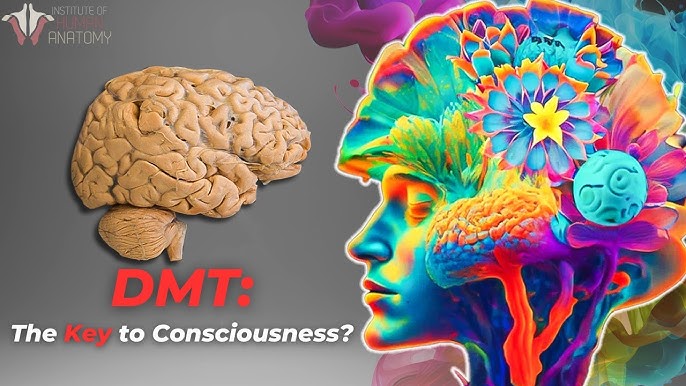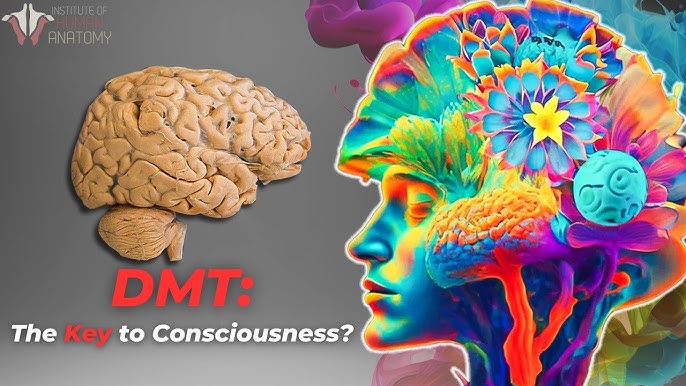How Does DMT Work in the Brain? Exploring Its Impact on Consciousness
How Does DMT Work in the Brain? Exploring Its Impact on Consciousness
Dimethyltryptamine (DMT) is a powerful psychedelic substance that has intrigued scientists and spiritual seekers alike for decades. Known for its intense, short-lasting effects, DMT has been the subject of numerous studies exploring its effects on the brain and consciousness. Its impact on perception, reality, and even the sense of self makes it a unique compound in the world of psychedelics. This article will delve into the science of how DMT works in the brain, its interactions with neurotransmitters, and the profound effects it has on consciousness. DMT AND THE BRAIN

1. Introduction to DMT and the Brain
DMT is a naturally occurring tryptamine compound found in various plants, animals, and even the human body. It is chemically similar to serotonin, a neurotransmitter that plays a key role in regulating mood, perception, and cognition. Though it is most famously associated with powerful psychedelic experiences, it also occurs endogenously in small amounts within the human brain. DMT AND THE BRAIN
DMT’s psychoactive effects occur when consumed in large quantities, often through smoking, vaporization, or ayahuasca ingestion. These effects include vivid visual and auditory hallucinations, altered time perception, and encounters with otherworldly entities. To understand DMT’s intense effects, it’s important to examine its interaction with brain neurotransmitters and neural networks. DMT AND THE BRAIN
2. The Chemical Structure of DMT
DMT belongs to the tryptamine class of compounds, which are derived from the amino acid tryptophan. Tryptamine itself is a key building block in the synthesis of other important neurotransmitters like serotonin and melatonin. Structurally, DMT consists of an indole ring attached to an ethylamine group, which is a characteristic feature of many psychedelic compounds. DMT AND THE BRAIN
DMT’s molecular structure shares striking similarities with serotonin, which helps explain why it can interact with serotonin receptors in the brain. This structural similarity allows DMT to bind to specific receptors in the brain, particularly those in the serotonergic system. However, DMT is more potent than serotonin, and it exerts its effects much more intensely, leading to alterations in sensory perception, mood, and cognition.
3. DMT’s Interaction with Serotonin Receptors
The primary mechanism by which DMT exerts its psychedelic effects is through its interaction with serotonin receptors, especially the 5-HT2A receptor. These receptors are found throughout the brain, particularly in areas involved in higher cognition and perception, such as the prefrontal cortex and limbic system. DMT AND THE BRAIN
Serotonin is a neurotransmitter that helps regulate mood, anxiety, and perception, and it plays a critical role in the experience of consciousness. By mimicking serotonin, DMT binds to these receptors and disrupts normal serotonin signaling. This disruption can lead to changes in perception, cognition, and mood, which is why psychedelics like DMT produce intense, often hallucinogenic experiences. DMT AND THE BRAIN
The 5-HT2A receptor, in particular, is crucial for the visual and perceptual effects associated with DMT. Research suggests that when DMT binds to this receptor, it alters the brain’s processing of visual and auditory stimuli, leading to the vivid hallucinations and surreal experiences that users often report. By interacting with these receptors, DMT effectively “hijacks” the brain’s normal processing and allows for an altered state of consciousness.
4. DMT and the Default Mode Network (DMN)
One of the most significant effects of DMT is its impact on the Default Mode Network (DMN), a network of brain regions that are active when a person is awake but not focused on any particular task. The DMN is associated with self-referential thinking, daydreaming, and internal dialogue. It is often considered the “default” mode of consciousness, as it is the brain state in which we spend most of our waking hours. DMT AND THE BRAIN
The DMN plays a crucial role in the sense of “self” and “ego.” When the DMN is functioning normally, it helps maintain a consistent sense of identity, self-awareness, and continuity of thought. However, DMT appears to disrupt the DMN, leading to a breakdown of the normal sense of self. This is why many users of DMT report experiences of ego dissolution, in which the boundaries between themselves and the external world become blurred or completely vanish. The disruption of the DMN under the influence of DMT can lead to feelings of unity, interconnectedness, and loss of individual identity. DMT AND THE BRAIN
Studies using functional magnetic resonance imaging (fMRI) have shown that DMT significantly reduces activity in the DMN while increasing connectivity between other brain regions. This shift in brain activity is thought to contribute to the radical changes in consciousness experienced during a Dimethyltryptamine trip.
5. Effects on Perception and Time
One of the most striking effects of Dimethyltryptamine is its ability to alter sensory perception. Many users describe experiencing vivid visual hallucinations, such as geometric patterns, intricate colors, and surreal landscapes. These hallucinations can be highly complex and seem as real, if not more so, than the external world. DMT AND THE BRAIN
DMT also profoundly affects the perception of time. Users often report that time seems to either slow down or speed up dramatically. A 20-minute DMT experience can feel like hours, with users describing entire journeys or life events occurring in what seems like an instant. This alteration of time perception is likely due to the disruption of normal brain networks that govern temporal awareness. DMT AND THE BRAIN
DMT alters time and space, with changes in brain activity supporting this experience. It affects the thalamus, which processes sensory information. By disrupting thalamic functioning, DMT breaks the normal flow of sensory data. This leads to altered experiences of time and reality in psychedelic states. DMT AND THE BRAIN
6. Ego Dissolution and Altered Consciousness
Ego dissolution is one of the most profound and often reported experiences of DMT. Many users describe feeling as though their sense of self, or “ego,” completely disappears during a DMT trip. This experience can be both liberating and terrifying, as the person may feel a sense of oneness with the universe or the loss of personal identity altogether. DMT AND THE BRAIN
This phenomenon occurs because DMT disrupts the normal activity of the DMN and other brain regions involved in self-referential thinking. The sense of a continuous, separate self is no longer maintained, and users often report a sense of unity with all things. Some even describe encounters with higher beings or entities that feel separate from their individual consciousness. DMT AND THE BRAIN
Ego dissolution is often seen as one of DMT’s most transformative effects. Many users report lasting psychological changes. These experiences can alter one’s worldview and perception of reality. Some believe DMT allows access to deeper consciousness, fostering spiritual growth or healing. DMT AND THE BRAIN
7. The Role of Endogenous DMT in the Brain
In addition to the DMT that is consumed externally, the human body also produces trace amounts of endogenous DMT. This naturally occurring DMT is thought to be synthesized in the pineal gland, a small organ in the brain that regulates sleep and circadian rhythms through the secretion of melatonin. DMT AND THE BRAIN
The role of endogenous DMT in the brain remains a subject of much speculation. Some researchers, including Dr. Rick Strassman, who conducted studies on DMT in the 1990s, have proposed that DMT plays a role in altered states of consciousness, such as dreaming, near-death experiences, and mystical or spiritual experiences. Others speculate that it may be involved in processes like memory, perception, and even the regulation of mood. DMT AND THE BRAIN
While the idea that the pineal gland produces DMT during significant life events remains controversial, studies suggest that DMT does play a role in neural function, potentially contributing to the brain’s ability to generate complex states of consciousness. DMT AND THE BRAIN
8. DMT’s Potential for Therapeutic Use
In recent years, there has been growing interest in the therapeutic potential of DMT and other psychedelics. Early research suggests that DMT may have applications in treating conditions like depression, anxiety, and PTSD, especially when combined with therapeutic frameworks like psychotherapy. DMT AND THE BRAIN
One of the key reasons DMT is being studied for its therapeutic potential is its ability to induce profound, often life-changing experiences. These experiences can help individuals confront repressed emotions, break through mental barriers, and gain new perspectives on life. Some studies suggest that DMT could help patients who are resistant to traditional treatments by “resetting” entrenched mental patterns and providing a new way of processing trauma or psychological distress. DMT AND THE BRAIN
Research into the clinical use of DMT is still in its early stages, and much more needs to be done to fully understand its therapeutic potential. However, the evidence so far is promising, and DMT is becoming increasingly recognized as a powerful tool for exploring the mind and treating mental health conditions. DMT AND THE BRAIN
Conclusion: The Science of DMT and Consciousness
DMT is a unique and powerful substance that has the ability to profoundly alter human consciousness. DMT interacts with serotonin receptors, disrupts the Default Mode Network, and impacts perception, making it a fascinating subject. Research into DMT’s brain effects and therapeutic uses is rapidly growing. DMT offers profound insights into consciousness, perception, and reality for scientific, therapeutic, and spiritual purposes. DMT AND THE BRAIN
4o mini

